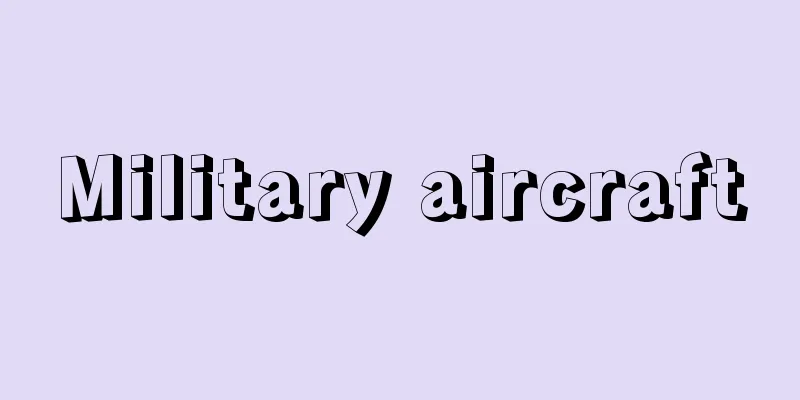Destroyer - destroyer

|
Originally, a high-speed surface vessel (surface combat vessel) with a torpedo as its main weapon and tasked with attacking large enemy ships. A type of warship. Today, it refers to a high-speed, general-purpose surface vessel with a standard (or normal) displacement of 3,000 to 7,000 tons, a speed of 30 to 37 knots, powerful fleet air defense, anti-submarine capability, and surface strike power, and highly seaworthy. It was built to counter the threat of torpedo boats, and the first two vessels were the Havock and the Dearing (240 tons, 27 knots), prototyped in the UK in 1893. They were originally called torpedo boat destroyers, but later came to be simply called destroyers. This type of vessel later began to attack enemy ships with their own torpedoes, replacing the torpedo boats. In 1903, the world's first ocean-going destroyer, the River Class (approximately 600 tons, 26 knots), was completed in the UK, and destroyers were now equipped with the ability to accompany fleets and carry out ocean operations. During World War I, destroyers were also used for submarine attacks and convoy escorts, proving that they were suitable for anti-submarine missions. In Japan, many ships of around 300 to 400 tons, 29 knots, and equipped with two 45 cm torpedo tubes were built before the Russo-Japanese War, and were used in wartime to attack enemy capital ships, repel and destroy enemy torpedo boats and destroyers, and patrol. The special type destroyer (1,680 tons, 37 knots), completed in 1928 (Showa 3), was a destroyer with excellent seaworthiness and dramatically improved gun and torpedo armament, and had a great influence on the design of destroyers in other countries. During World War II, many countries placed emphasis on strengthening the anti-aircraft gun armament of destroyers, and at the same time, they sought to improve their anti-submarine and torpedo capabilities. Many ships of 1,500 to 3,000 tons were built, and they became all-purpose ships, performing a wide range of missions such as torpedo and gunfire, fleet and convoy escort, anti-submarine, air defense, patrol, reconnaissance, transport, support for landing operations, and minelaying. Also appearing were ships that focused on specific missions, such as air defense destroyers and anti-aircraft patrol destroyers. On the other hand, large numbers of escort destroyers or simplified destroyers that were relatively small and slow, suitable for mass production, and placed emphasis on anti-submarine and anti-aircraft capabilities were built in countries such as the United Kingdom, the United States, and Japan. After World War II, the nature of naval warfare changed, and destroyers became less important than they once were. However, the appearance of surface-to-air missiles (SAMs) in the early 1960s made destroyers useful again as fleet air defense, and in the 1970s, they were equipped with anti-ship missiles (SSMs), giving them a powerful surface strike capability. Furthermore, the installation of helicopters on board improved their capabilities. In the early 1970s, ships began to carry large all-weather anti-submarine aircraft, and later, multipurpose aircraft were installed for anti-submarine and anti-ship missile defense, and for searching and locating targets for anti-ship missile attacks, in an effort to improve their overall combat power. In addition to the above equipment, the installation of electronic, communication, and combat information processing equipment made destroyers into general-purpose high-speed surface ships with a balanced combination of anti-air, anti-submarine, and anti-surface strike capabilities. Since the 1990s, the adoption of the Aegis system, which has the ability to simultaneously deal with multiple targets over a wide area, and stealth design has led to the appearance of large ships of about 7,000 tons, such as the American Aegis destroyer Arleigh Burke Class. Except for torpedo attacks, destroyers currently perform almost the same missions as they did during World War II, but American destroyers are characterized by their emphasis on escorting aircraft carrier task forces, while Russian destroyers are characterized by their emphasis on surface combat. In the future, the ability to attack coasts, including inland, will be necessary, and the destroyer Zumwalt Class currently being built by the United States will have this capability, and is a large ship with a full load displacement of over 14,000 tons. Destroyers traditionally used steam turbines as their engines, but since the 1960s, gas turbine engines have been adopted, either alone or in combination with other engines, and have become the mainstream of modern destroyers. The Japan Maritime Self-Defense Force's escort ships fall into this category. Incidentally, Britain's newest destroyers, the Dearing Class (6,400 tons, completed in 2009) and the Zumwalt class, are the first to use an integrated electric propulsion system for their engines (a type of electric propulsion system in which all of the ship's electrical power requirements are obtained from a single generating system, not just for the electric motors that drive the thrusters), and this is a trend that will be adopted in future large surface combatants. [Yasuo Abe] "Destroyers: A Technical Retrospective" by Hori Motomi (1969, Hara Shobo)" ▽ "Modern Warships" by Hori Motomi (1970, Hara Shobo)" ▽ "New Modern Warships" by Hori Motomi and Ebata Kensuke (1987, Hara Shobo)" ▽ "World's Ships No. 587, Special Feature: Postwar Destroyers" (2001, Kaijinsha)" ▽ "Fukui Shizuo Collected Works 5: The Story of Japanese Destroyers" (2009, Kojinsha) ▽ "Stephen Saunders Jane's Fighting Ships 2010-2011" (2010, Jane's Information Group) [Reference items] | | |The 40th ship of the U.S. Navy's Arleigh Burke-class guided-missile destroyer. Commissioned in 2003. Displacement 9,200 tons, overall length 155 m, overall width 20 m, speed over 32 knots. © Koji Ishiwata "> Destroyer Chaffee Source: Shogakukan Encyclopedia Nipponica About Encyclopedia Nipponica Information | Legend |
|
元来は魚雷を主兵装とし、敵の大艦を襲撃することを任務とした高速水上艦艇(水上戦闘艦艇)。軍艦の一種。今日では、基準(または常備)排水量3000~7000トン、30~37ノットで強力な艦隊防空力、対潜能力および水上打撃力を備え、航洋性の高い高速汎用(はんよう)水上艦艇をさす。魚雷を搭載した水雷艇の脅威に対抗するために建造されたもので、1893年イギリスで試作されたハボックHavock、デアリングDearing(240トン、27ノット)の2艦が最初。当初、水雷艇駆逐艦torpedo boat destroyerと称したが、のちに単に駆逐艦とよばれるようになった。この艦種はその後、自ら魚雷で敵艦を襲撃するようになり、水雷艇にとってかわった。1903年には、イギリスで世界最初の航洋駆逐艦リバー級River Class(約600トン、26ノット)が竣工(しゅんこう)、駆逐艦は艦隊に随伴し洋上作戦を遂行しうる能力を備えるに至った。第一次世界大戦時には、駆逐艦は潜水艦攻撃や船団護衛にも使用され対潜任務にも適していることを立証した。 日本では、日露戦争までに300~400トン前後、29ノット、45センチ魚雷発射管2門装備の艦が多数建造され、戦時には敵主力艦攻撃、敵水雷艇・駆逐艦の撃退・撃滅、哨戒(しょうかい)などに用いられた。1928年(昭和3)に竣工した特型駆逐艦(1680トン、37ノット)は、優れた航洋性と飛躍的に強化された砲雷兵装を有する駆逐艦で、各国の駆逐艦設計上、大きな影響を与えた。第二次世界大戦では、各国で駆逐艦の対空砲熕(ほうこう)兵装の強化が重視され、同時に対潜能力、雷撃能力の向上が図られた。1500~3000トン級の艦が多数建造され、雷撃・砲撃、艦隊・船団護衛、対潜、防空、哨戒、偵察、輸送、上陸戦支援、機雷敷設など広範囲な任務につき、万能艦的な存在となった。また防空駆逐艦、対空哨戒駆逐艦など特定任務に重点を置いた艦も登場、他方、比較的に小型・低速で量産に適し、対潜・対空能力を重視した護衛駆逐艦または簡易型駆逐艦が、イギリス、アメリカ、日本などで多数建造された。 第二次世界大戦後は海戦の様相の変化から、その重要度はかつてほどのものではなくなった。しかし、1960年代初頭に登場した対空ミサイル(SAM)は、艦隊防空能力としての有用性をふたたび駆逐艦にもたらし、1970年代には対艦ミサイル(SSM)が装備されるに至り、強力な水上打撃力をも備えることになった。さらに、艦上へのヘリコプター搭載による能力向上も図られた。1970年代前期には大型全天候対潜航空機の搭載艦も出現し、さらにはその後、対潜・対艦ミサイル防御、対艦ミサイル攻撃目標の捜索、標定などを行う多目的機を搭載し、総合戦力を向上させる努力がはらわれている。以上の諸装備に加えて、電子、通信、戦闘情報処理などの装備の搭載により、駆逐艦は対空、対潜、対水上打撃力をバランスよく備えた汎用高速水上艦になった。1990年代からは広域防空多目標同時対処能力を有するイージス・システム、ステルス設計などの採用により、アメリカのイージス駆逐艦アーレイ・バーク級Arleigh Burke Classのように艦型が約7000トンの大型艦も出現している。雷撃を除き、現在では第二次世界大戦当時とほぼ同様の任務を遂行しているが、アメリカの駆逐艦は空母機動部隊の護衛を、ロシアの駆逐艦は水上戦闘を重視している点に特徴がある。今後は内陸を含めた沿岸への攻撃能力が必要とされ、アメリカが建造中の駆逐艦ズムウォルト級Zmwalt Classはこの能力を備え、満載排水量が1万4000トンを超す大型艦である。駆逐艦の機関は従来は蒸気タービンが使用されていたが、1960年代以降は、ガスタービン機関が単独あるいは他種機関と併用された形で採用され、現代駆逐艦の主流を占めるに至っている。海上自衛隊の護衛艦はこの艦種に相当する。なお、イギリスの最新駆逐艦デアリング級Dearing Class(6400トン、2009年完成)と前記ズムウォルト級は、機関に初めて統合電気推進方式(電気推進方式の一種で、推進器駆動の電動機用だけでなく、艦の所要電力のすべてを同一発電システムで得る)を採用しており、これが今後の大型水上戦闘艦艇に用いられる趨勢(すうせい)にある。 [阿部安雄] 『堀元美著『駆逐艦 その技術的回顧』(1969・原書房)』▽『堀元美著『現代の軍艦』(1970・原書房)』▽『堀元美・江畑謙介著『新・現代の軍艦』(1987・原書房)』▽『『世界の艦船第587号 特集 戦後の駆逐艦』(2001・海人社)』▽『『福井静夫著作集5 日本駆逐艦物語』(2009・光人社)』▽『Stephen SaundersJane's Fighting Ships 2010-2011(2010, Jane's Information Group)』 [参照項目] | | |アメリカ海軍のアーレイ・バーク級ミサイル駆逐艦の40番艦。2003年就役。排水量9200t、全長155m、全幅20m、速力32ノット以上©石渡幸二"> 駆逐艦チャフィー 出典 小学館 日本大百科全書(ニッポニカ)日本大百科全書(ニッポニカ)について 情報 | 凡例 |
>>: Wood-rotting beetle - Allecula melanaria
Recommend
Kinoshita Riverbank
…Located on the south bank of the Tone River, the...
Iwakuni Otake Petrochemical Complex
...The axis of industrial construction in Japan d...
He - ka (English spelling)
One of the ancient Chinese ceremonial vessels. In ...
"The Complete Record of the King's Rule"
…The copies that were in the imperial court seem ...
Custis, JP - Custis
...The changing of the guard at the Tomb of the U...
"Patriotic Hyakunin Isshu"
...The leading members were Tokutaro Fujita, Yoju...
Peace of Aachen - Aachen no wayaku
This refers to the following peace treaty made in...
Capuana - Capuana (English spelling) Luigi Capuana
Italian literary critic and novelist. Influenced ...
Kitto - Kitto
…It is widely distributed from central Honshu sou...
Common kingfisher
…A species of bird in the family Alcedinidae, ord...
Half-cell reaction
…An electrochemical reaction that occurs between ...
Actinium Emanation
…A gaseous radioactive nuclide belonging to the a...
Iglesias, Pablo
Born: October 18, 1850 El Ferrol del Caudillo [Die...
Mendaña (English spelling) Alvaro de Mendaña de Neira
1542?-95 Spanish navigator and explorer. Born in Z...
Hoteiran - Hoteiran
A perennial plant of the orchid family (APG class...






![Rubeshibe [town] - Rubeshibe](/upload/images/67cd31afb9a1c.webp)


